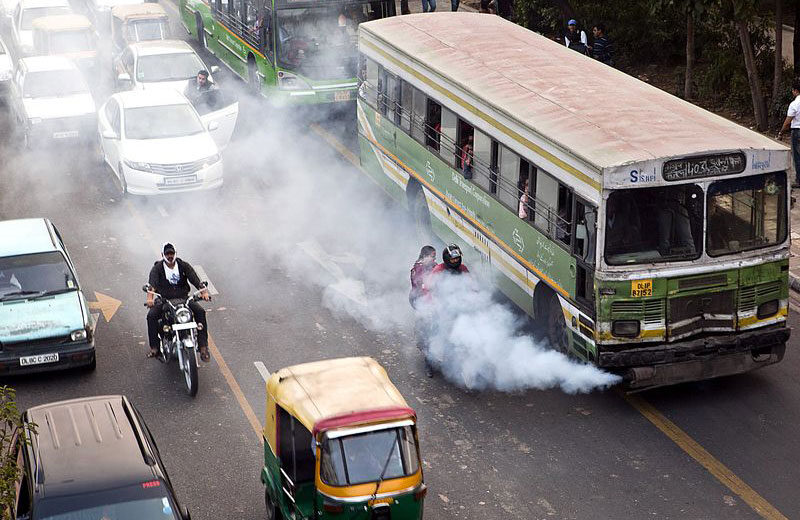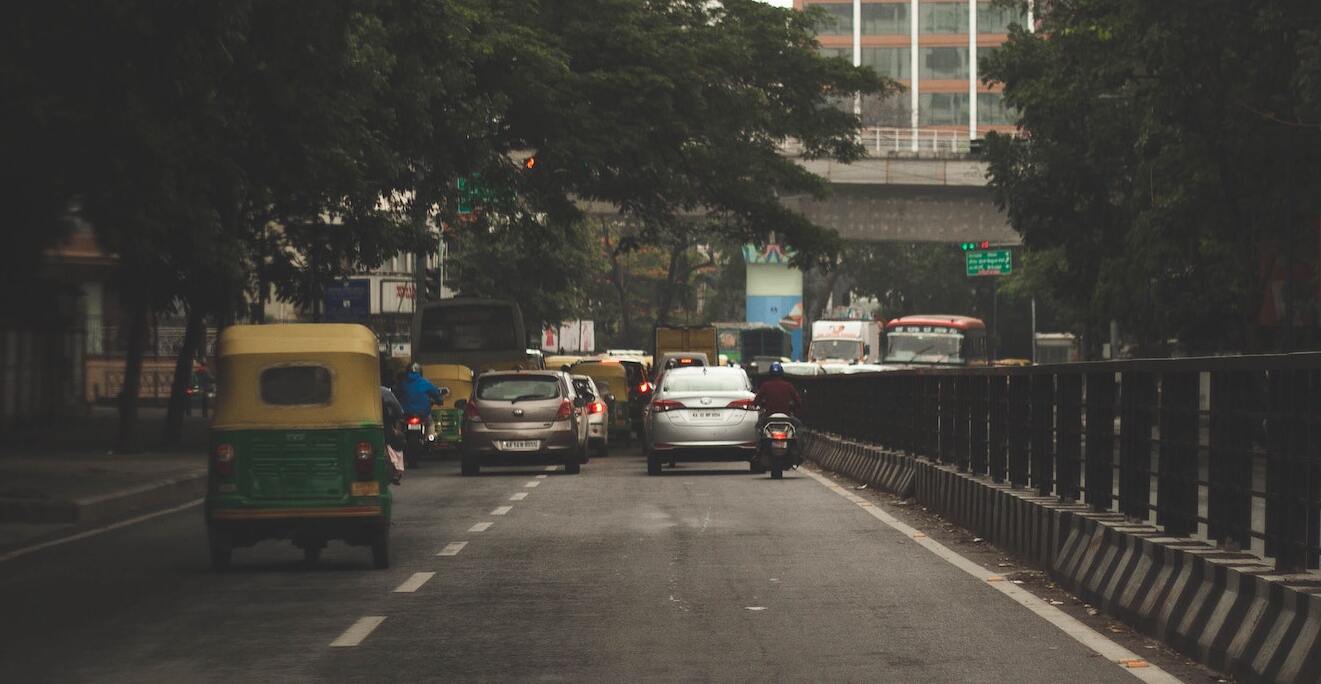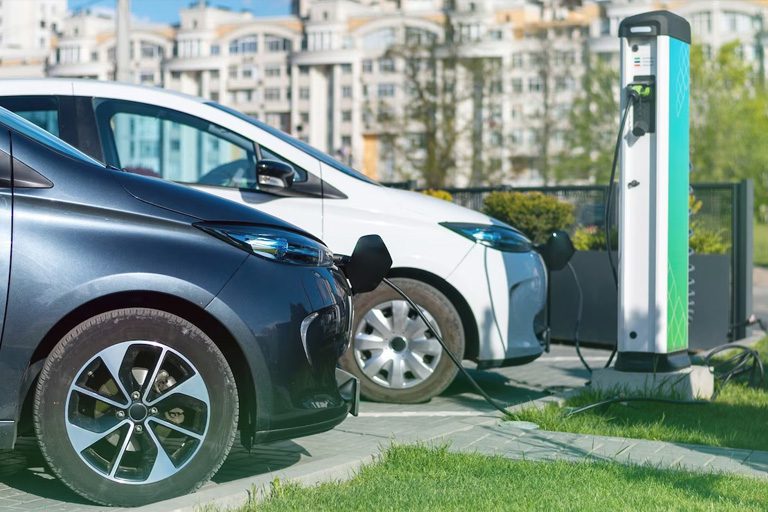In terms of population, India is the world’s second-largest country. Transport is a crucial factor in the growing economy of India. Over the past ten years, the number of vehicles on Indian roads has increased by 240%, and it is possible to grow at an identical rate over the next 20 years.

Over the years, due to the increasing rate of vehicles, environmental pollution has become a matter of concern. Many public interest litigations were in support of breathing cleaner air. Therefore, the government had no choice except to introduce some regulations to curb vehicle pollution.
Many steps were taken to control pollution, especially in heavily polluted cities like Delhi. The regulations introduced by the government played a role in maintaining the air pollution produced by vehicles.
Below is a complete look at all steps taken by the government to control pollution and provide the citizens with emission-free air.
The Air (Prevention and Control of Pollution) Act 1981
By the early 1970s, the effects of climate change caused by pollution became too apparent. The nation had to pass its laws to diminish the hazardous effects. Therefore, during the United Nations General Assembly on Human Environment in 1972, a decision was passed that requested the world’s nations to preserve natural resources like air.
India had issues related to air pollution due to factors like combustion, improper industrial practices, burning fossil fuels, etc. Thus, under the Constitution of India, a law was introduced by the Parliament of India known as “The Air (Prevention and Control of Pollution) Act” in 1981 to diminish the harmful effects of air pollution. It is the first solid step taken to control pollution.
The Environment (Protection) Act 1986
The original Constitution of India did not have a plan for protecting the natural environment. But, the Fundamental Duties, which were a result of the 42nd Amendment to the Constitution, authorized safeguarding nature as the duty of citizens.
Thus, the Parliament of India passed this act to save the natural environment from the harmful effects of pollution due to the United Nations Conference on Human Environment held in 1972. This act mandated environmental quality standards, mainly those related to emissions or discharge of environmental pollutants like vehicles.
The Vehicle Emission Standards
The emission standards for Indian motor vehicles were the idle emission limits implemented in 1989. They were replaced by mass emission limits for petrol engines in 1991 and diesel engines in 1992. The use of catalytic converters was made necessary for all cars by 1995.
1. Bharat Stage I
India’s first automotive emission norm was “India 2000,” also called “Bharat Stage I .” A maximum Carbon Monoxide emission of 2.72 g/km, Respirable suspended particulate matter discharge of 0.14, and Nitrogen Oxide + Hydrocarbons release of 0.97 g/km were allowed in this standard. It was like the Euro 1 Standards.
The car manufacturers had to re-tune the secondary air intake system, carburetor, and exhaust gas recirculation system, increase the catalyzer capacity, and add a tri-metal coating to the system- to achieve India 2000.
2. Bharat Stage II
The sales of BSII cars took place between 2001-2010. To upgrade to BSII, the car manufacturers had to substitute the carburetor with a Multi-point Fuel Injection (MPFI). In these norms, the maximum emissions of Carbon Monoxide were 2.2 g/km, Nitrogen Oxide + Hydrocarbons discharge of 0.50 g/km, and Respirable suspended particulate matter discharge of 0.08. Furthermore, the sulfur content of BSII-complaint fuels is confined to 500 PPM.
This norm resulted in a significant reduction in emissions.
3. Bharat Stage III
the government implemented this regulation in 2005, making the sales of BSIII vehicles compulsory nationwide by 2010. Only 2.3 g/km of Carbon Monoxide emission, Respirable suspended particulate matter discharge of 0.05, and Nitrogen Oxide + Hydrocarbon discharge of 0.35 g/km were allowed in these norms.
Car makers upgraded to BSIII norms by installing a catalytic convertor that controlled the emissions of Carbon Monoxide and Hydrocarbons. The diesel vehicles emitted 0.50 g/km of nitrous oxide, 0.64 g/km of Carbon Monoxide, and 0.56 g/km discharge of Nitrogen Oxide + Hydrocarbons. Additionally, the sulfur content had a restriction of 100 PPM.
These regulations helped in curbing vehicular pollution to a remarkable degree.
4. Bharat Stage IV
The Indian government carried out these measures across the county in April 2017. This strategy limited the pollutants to 1.0 g/km emissions of Carbon Monoxide, Respirable suspended particulate matter discharge of 0.05 g/km, and 0.18 g/km combustion of Nitrogen Oxide + Hydrocarbons.
The diesel vehicles emitted 0.50 g/km of Carbon Monoxide, 0.30 g/km discharge of Nitrogen Oxide + Hydrocarbons, and 0.25 g/km of nitrous oxide. The sulfur content was limited to 50PPM as well.
To advance to BSIV units, car makers had to include bigger catalytic convertors to diminish nitrogen-based emissions. They also had to adjust the engine control unit to ensure more efficient combustion. Their motors also had modified exhaust systems and air intakes.
These standards helped to cut down a massive amount of carbon emissions.
5. Bharat Stage VI
The country skipped Bharat Stage V norms and jumped to Bharat Stage VI norms on April 1, 2020. In these emissions, petrol vehicles had a reduction of 25% in their nitrogen oxide emissions.
Diesel vehicles had their Hydrocarbon+ Nitrogen Oxide discharge by 43%, nitrous oxide levels by 68%, and Respirable suspended particulate matter discharge levels by 82%.
Faster Adoption and Manufacturing of Hybrid and Electric Vehicles (FAME)
The Faster Electric Vehicle Adoption and Manufacturing of Hybrid and Electric Vehicles strategy was introduced in April 2015 under the National Electric Mobility Mission to encourage the purchase of hybrid and electric vehicles by giving financial support. The first phase of FAME ran for four years until 2019.
The second phase of FAME commenced on April 1, 2019, and will run for three years. This strategy aims to support 7000 e-buses, 55000 e-4 Wheeler Passenger Cars, 10 lahks e-2 Wheeler, and 5 lahks e-3 wheelers.
The Vehicle Scrappage Policy
It was launched on August 13, 2021. It is a government-funded policy to exchange old vehicles with new vehicles on Indian roads. According to this policy, commercial vehicles more aged than 15 years and passenger vehicles older than 20 will be obligatorily scrapped if they don’t pass the emission and fitness test.
The main aim of this policy is to reduce urban pollution levels and to slowly get rid of old cars as their emission levels are much higher than the new and modern cars.
Liquified Natural Gas (LNG)
The government of India started importing Liquified Natural Gas because it is much cleaner than CNG. LNG releases 30% less carbon dioxide than fuel oil and 45-50% less carbon dioxide than coal. It produces an insignificant amount of sulfur dioxide, mercury, and other particulates compared to other fuels. It also does not emit soot, dust, or fumes.
Since 2013, India has been the world’s fourth-largest importer of LNG, and its imports are increasing. LNG now accounts for more than 50% of India’s gas supply.
Green Cess
The Green Cess discouraged people from driving old vehicles as they have a higher rate of carbon dioxide emissions. In 2019, a study revealed that 17 lakh people died prematurely death because of a direct or indirect result of pollution.
Both commercial and personal vehicles have to pay this green tax. If the commercial vehicle is more than eight years old, it is liable to pay this tax; if the personal car is more than 15 years old, it is also responsible for paying this tax.
Implementing this tax has encouraged people to get a new, modern vehicle that produces fewer emissions, which has helped curb vehicular pollution.
The Indian government has realized the dangerous effects of vehicle pollution on the health of the citizens and the environment. Therefore, they have introduced numerous regulations to curb vehicular pollution.
These steps have produced a positive outcome as they have helped in reducing emissions of carbon dioxide and have also helped in reducing global warming,
These initiatives have also played their role in producing safer and cleaner air to breathe in, decreasing the chances of having lung cancer because of the polluted air, and making India a better place to live.
Some of these schemes have also helped people financially, resulting in a more stable income to fulfill their daily needs.
Do you think these government regulations have helped in curbing vehicle pollution?







